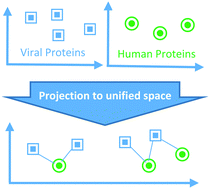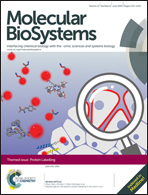Computational prediction of virus–human protein–protein interactions using embedding kernelized heterogeneous data
Abstract
Pathogenic microorganisms exploit host cellular mechanisms and evade host defense mechanisms through molecular pathogen–host interactions (PHIs). Therefore, comprehensive analysis of these PHI networks should be an initial step for developing effective therapeutics against infectious diseases. Computational prediction of PHI data is gaining increasing demand because of scarcity of experimental data. Prediction of protein–protein interactions (PPIs) within PHI systems can be formulated as a classification problem, which requires the knowledge of non-interacting protein pairs. This is a restricting requirement since we lack datasets that report non-interacting protein pairs. In this study, we formulated the “computational prediction of PHI data” problem using kernel embedding of heterogeneous data. This eliminates the abovementioned requirement and enables us to predict new interactions without randomly labeling protein pairs as non-interacting. Domain–domain associations are used to filter the predicted results leading to 175 novel PHIs between 170 human proteins and 105 viral proteins. To compare our results with the state-of-the-art studies that use a binary classification formulation, we modified our settings to consider the same formulation. Detailed evaluations are conducted and our results provide more than 10 percent improvements for accuracy and AUC (area under the receiving operating curve) results in comparison with state-of-the-art methods.



 Please wait while we load your content...
Please wait while we load your content...